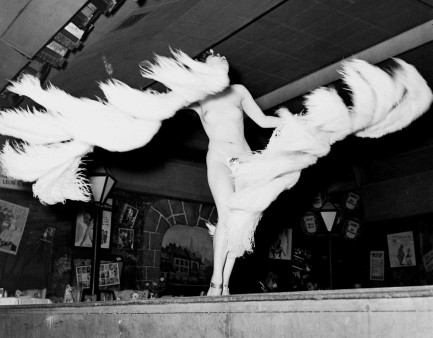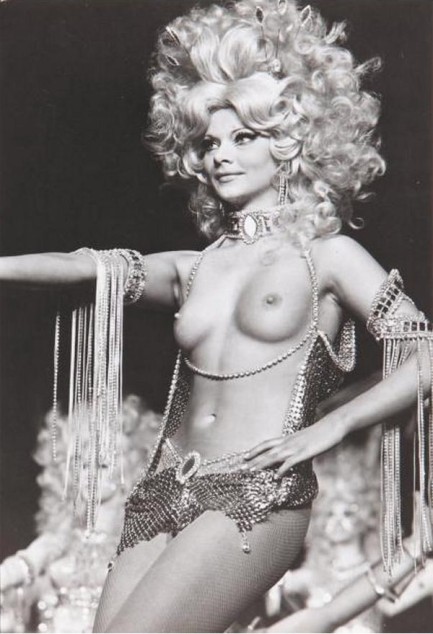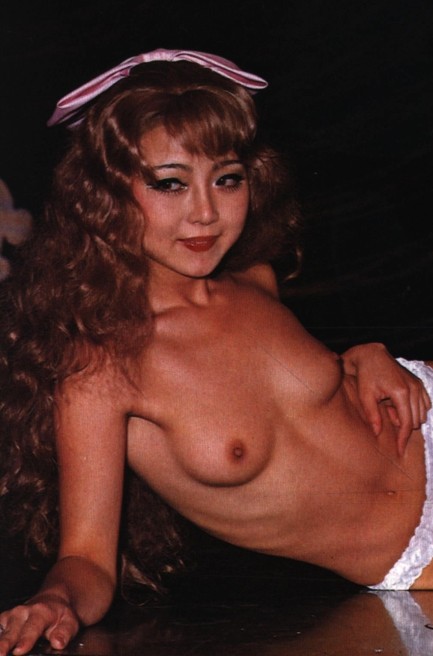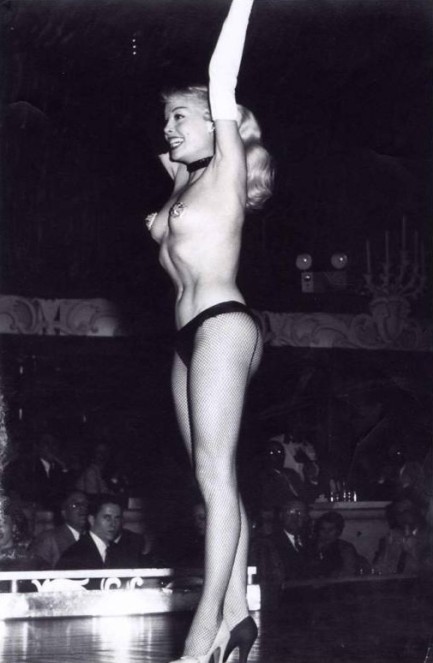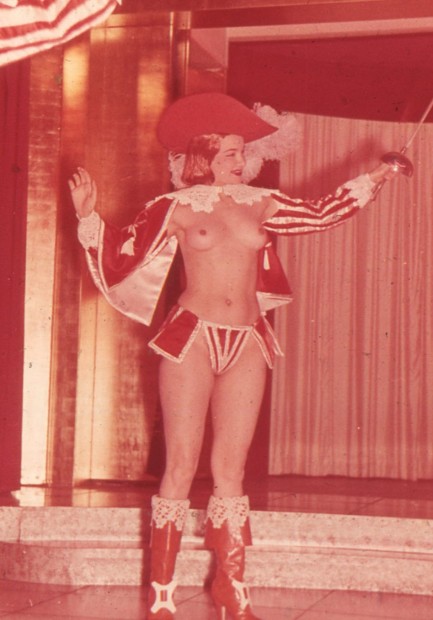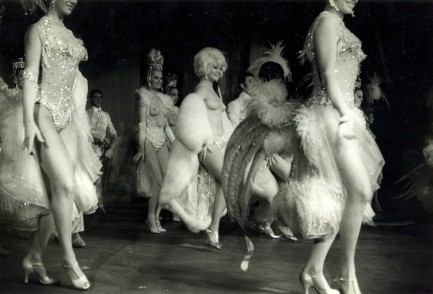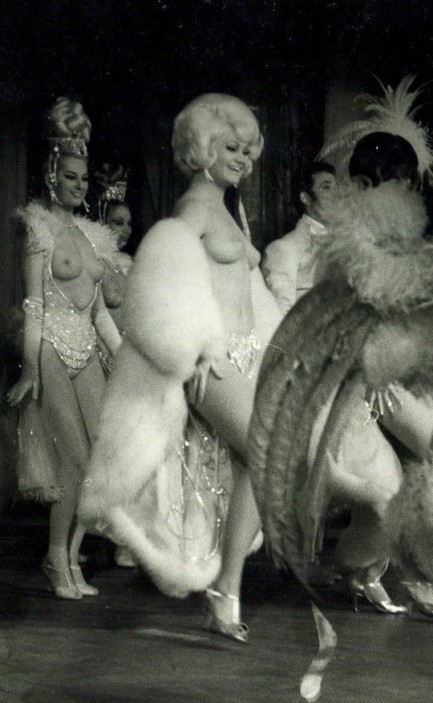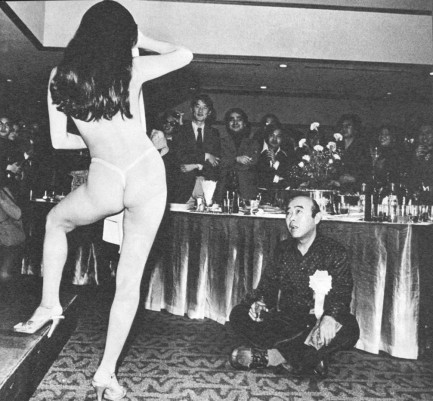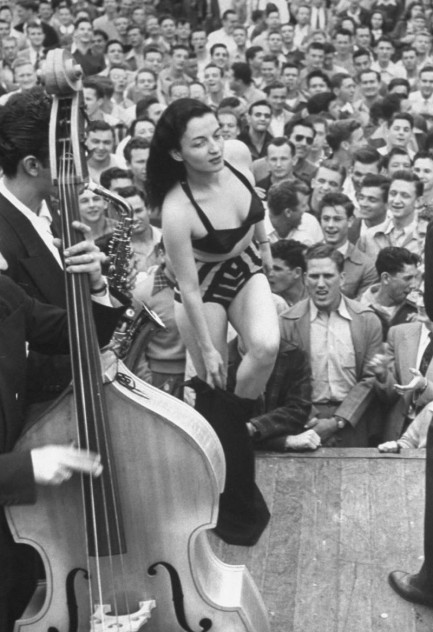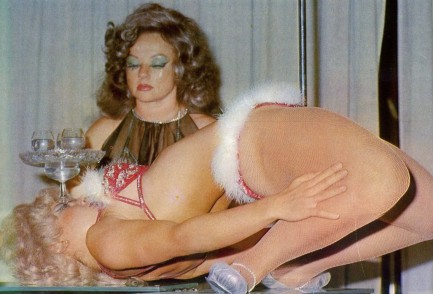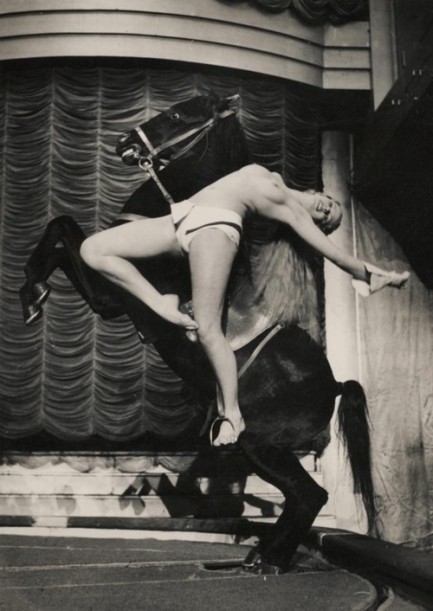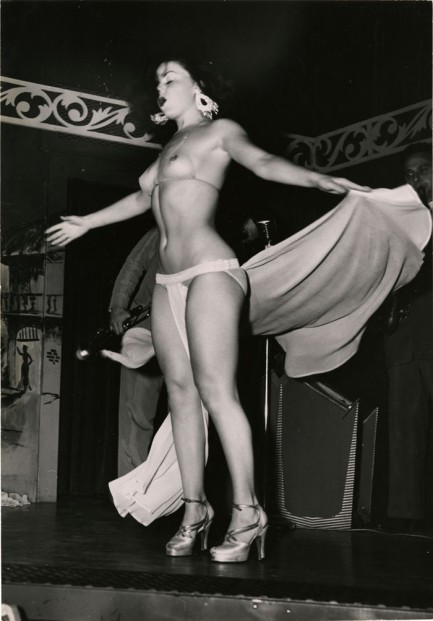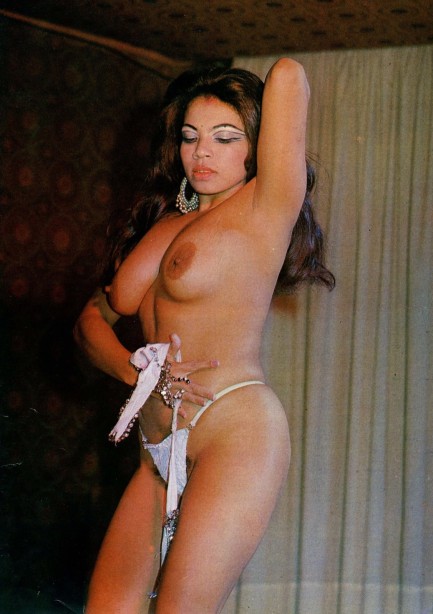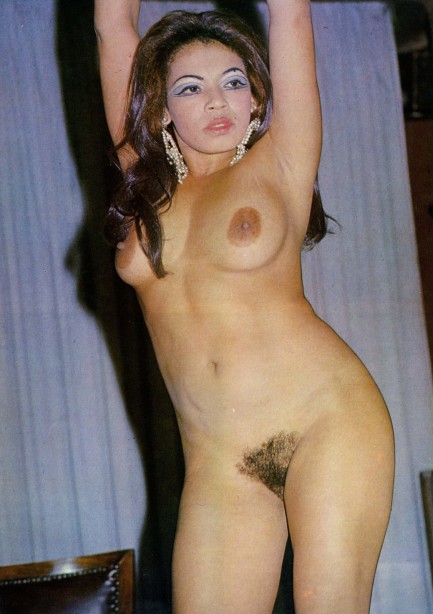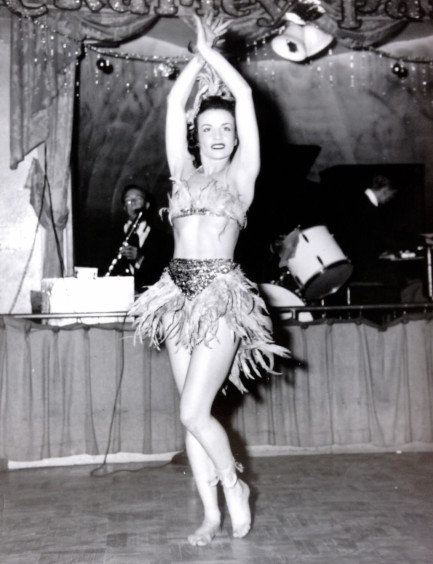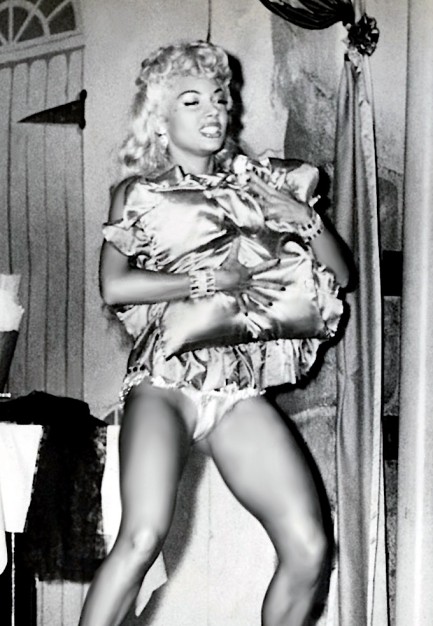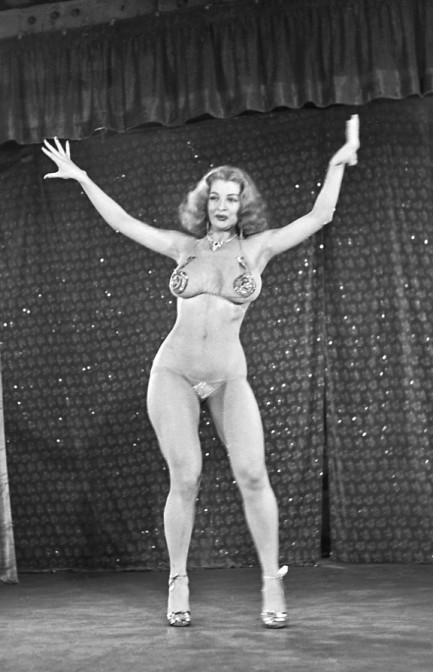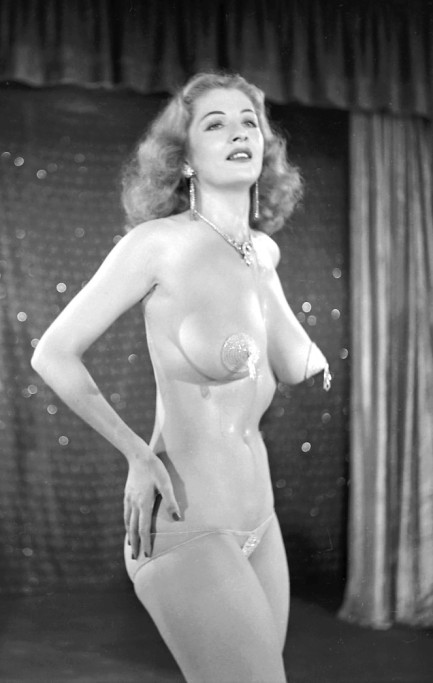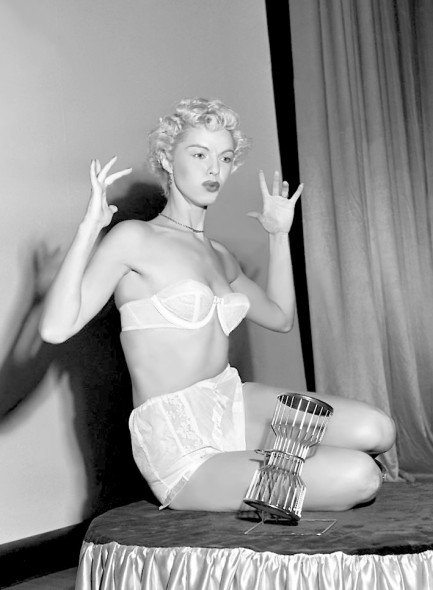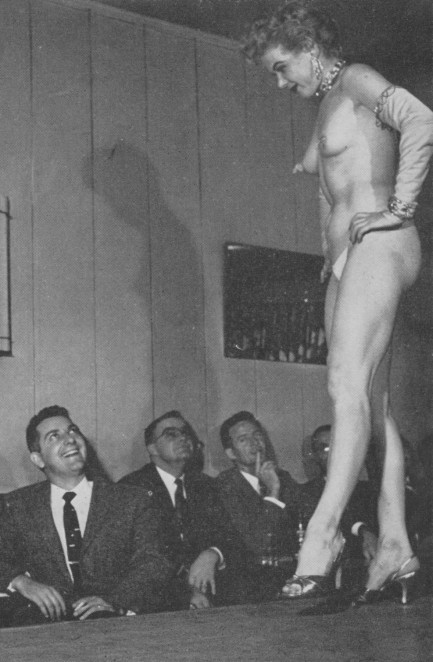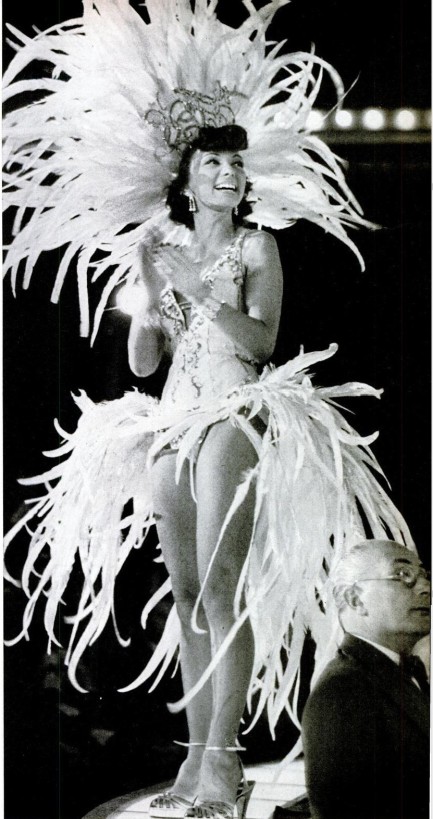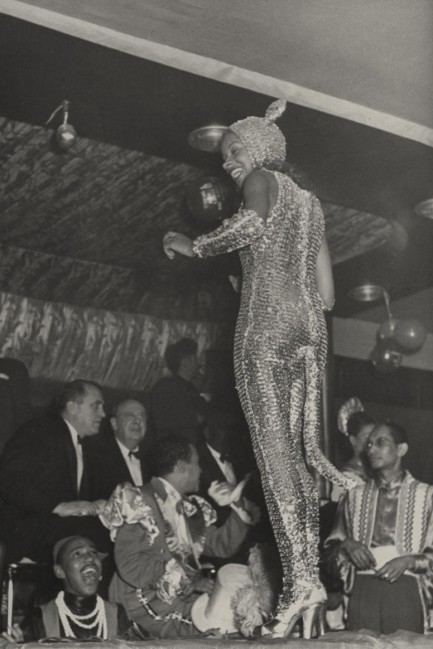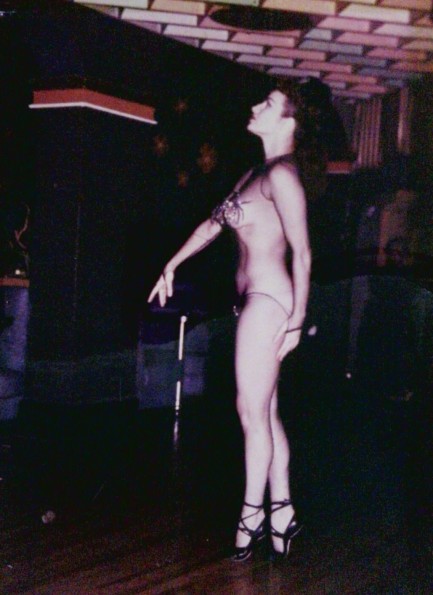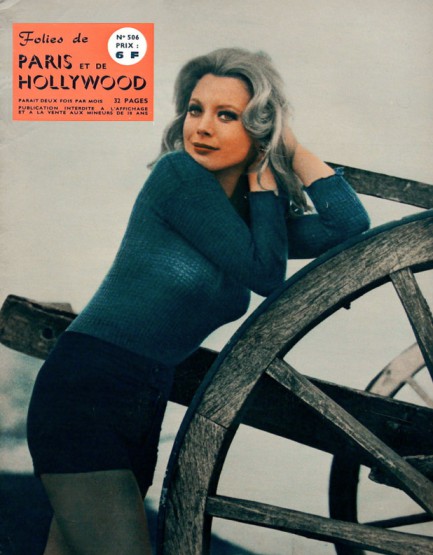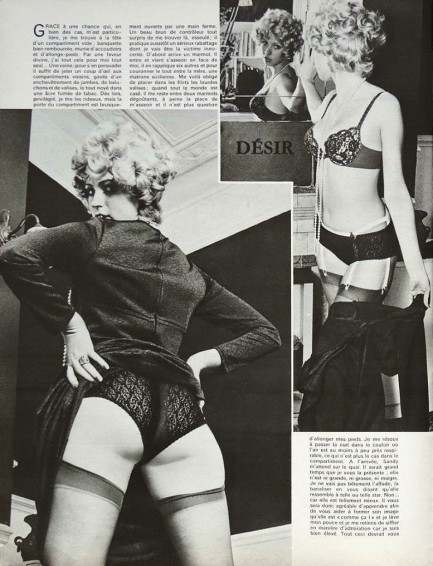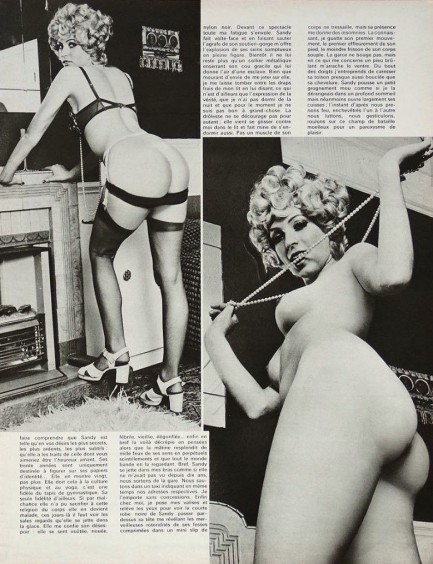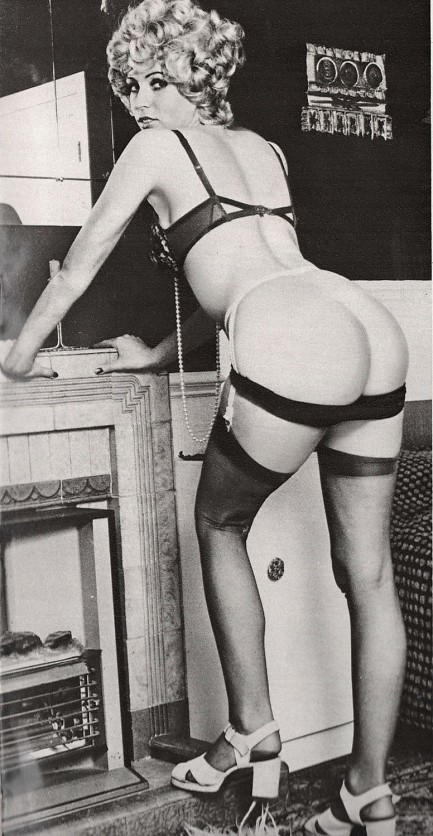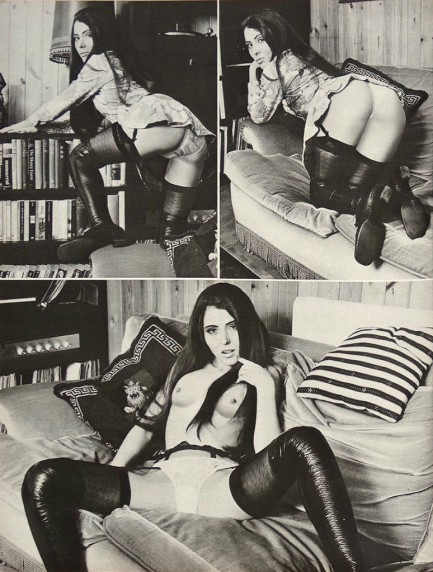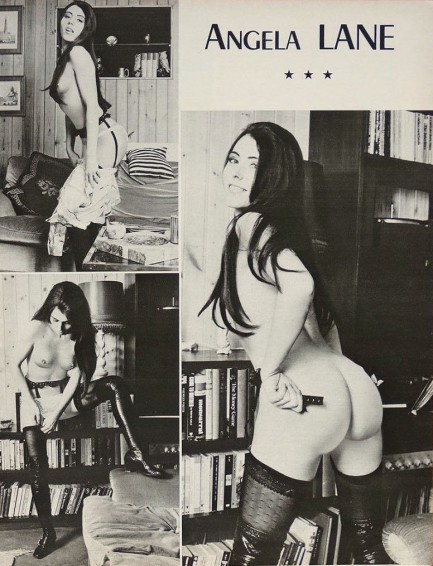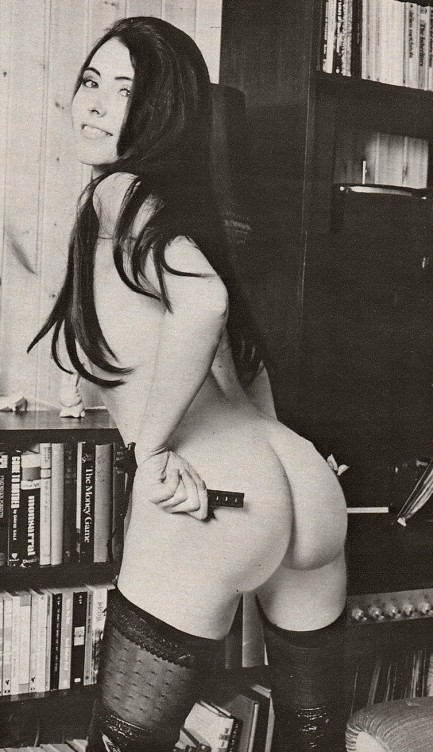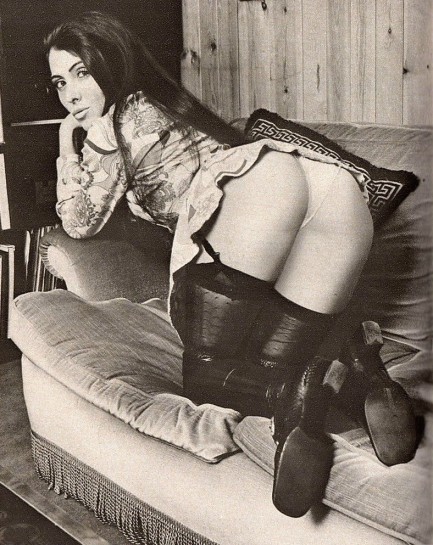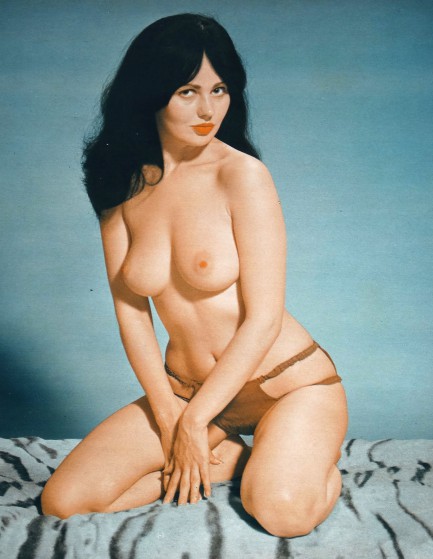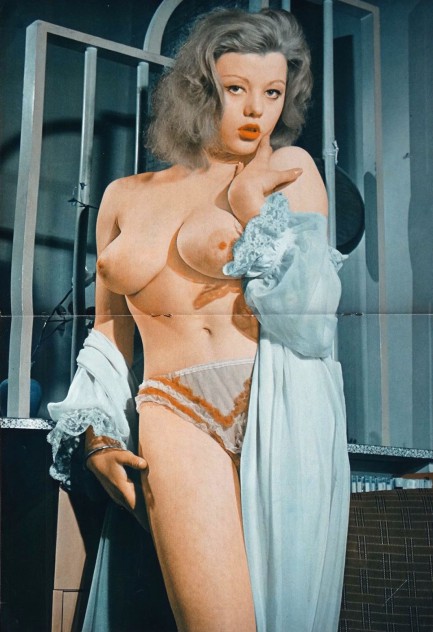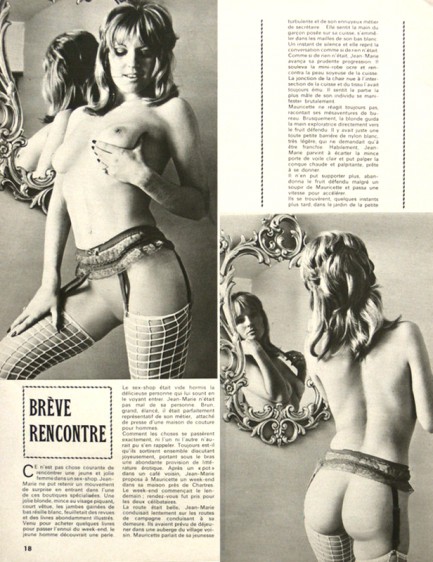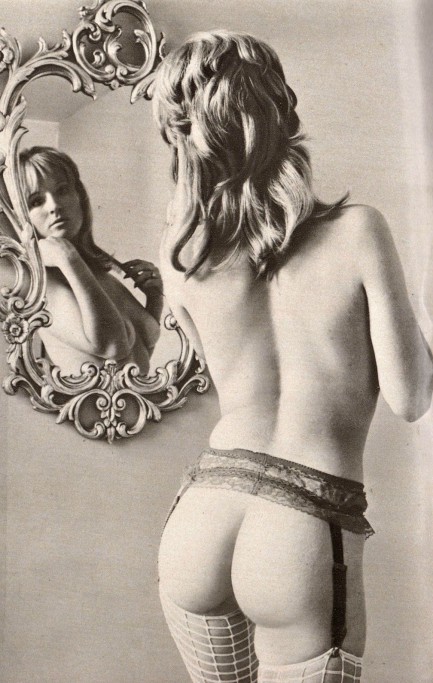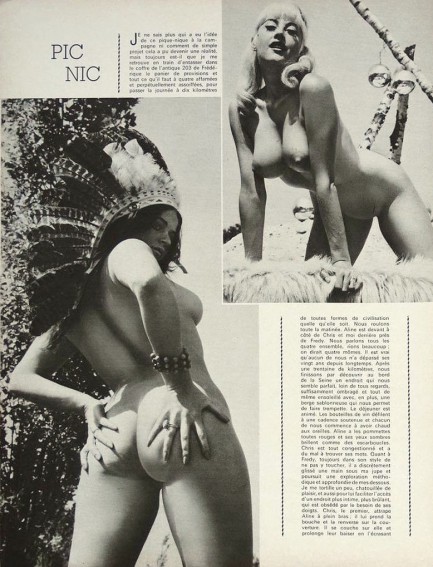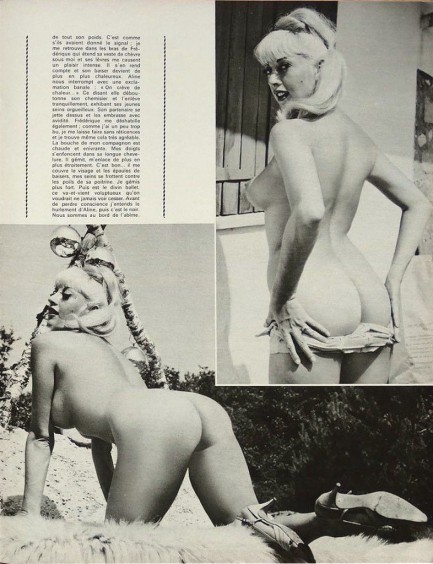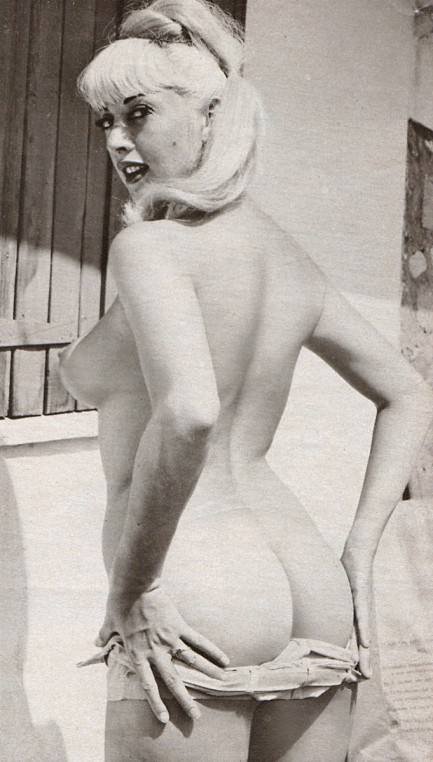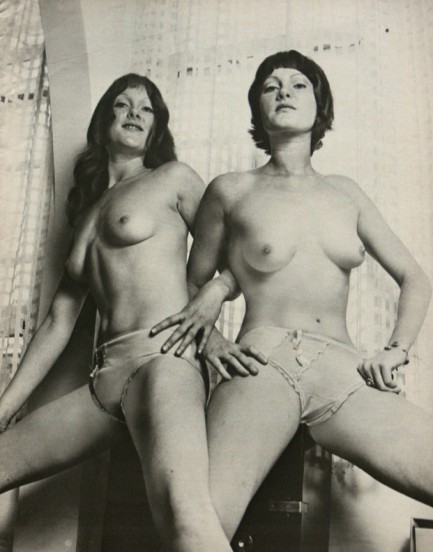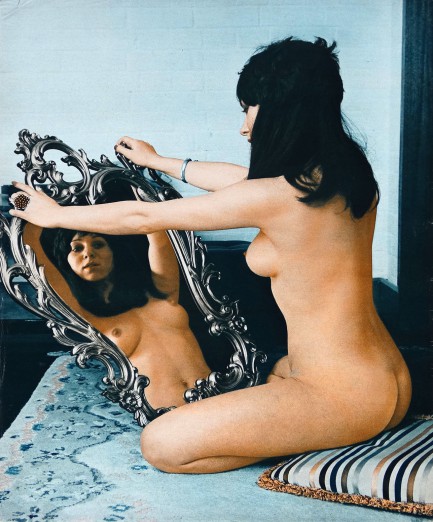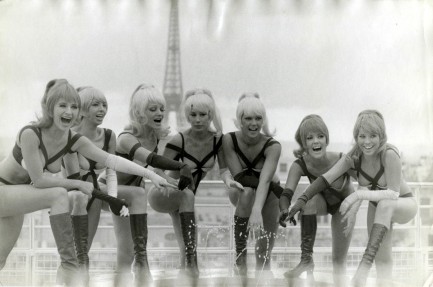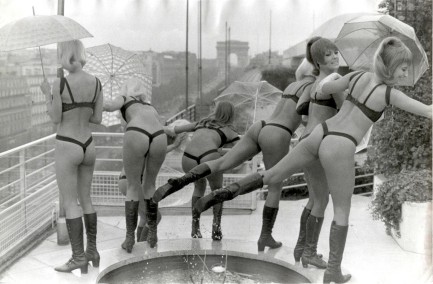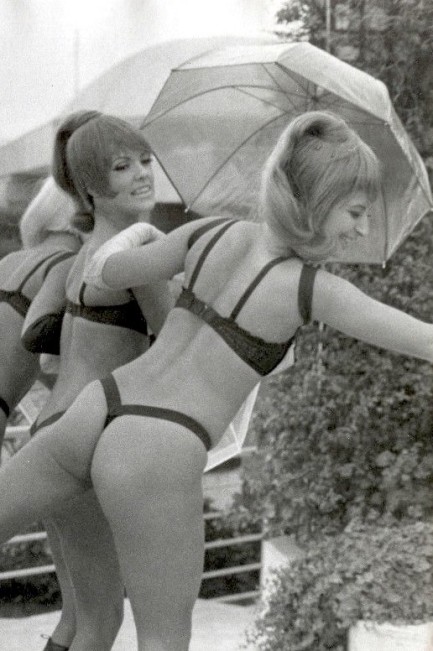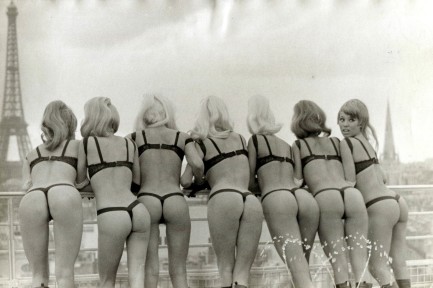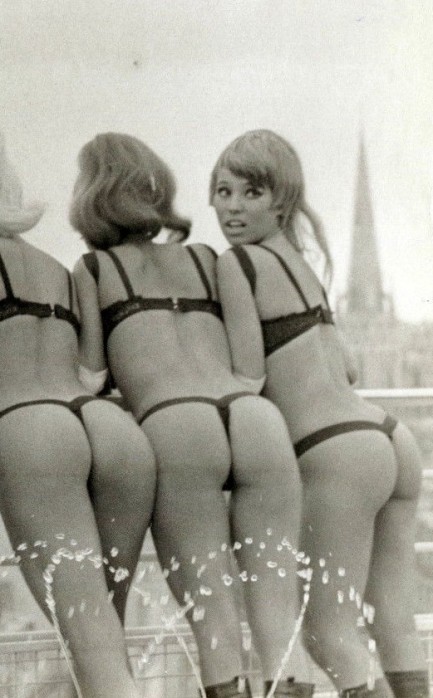 The anatomy and the ecstasy. 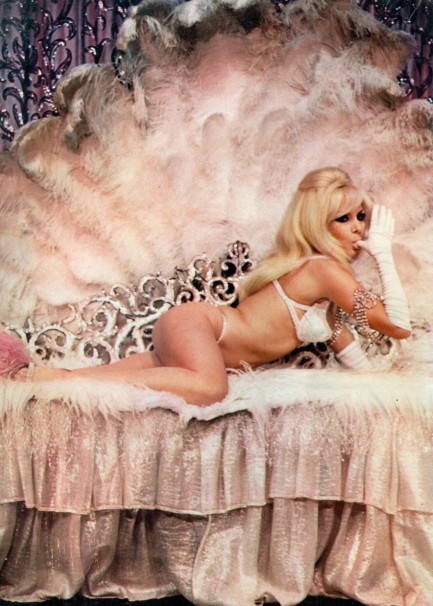 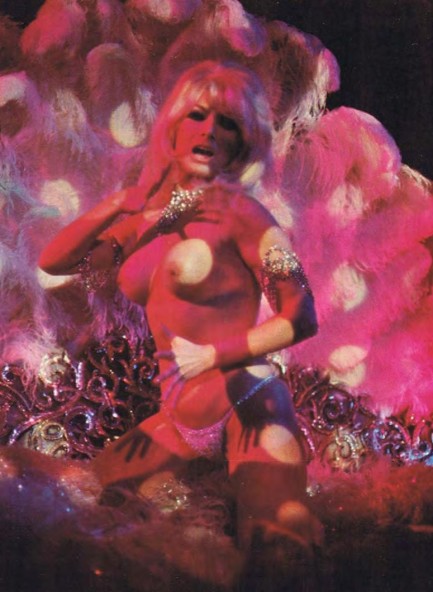
We have a tremendous amount of material on burlesque in Pulp Intl., yet it's been eight years since we put together a full collection of mid-century burlesque dancers, go-go girls, and strippers. That day has arrived again. Above and below you see some of the better shots we've run across of late, featuring the famous and the obscure, the restrained and the explicit, the domestic and the foreign, and the blonde, red, brown, and brunette. Where possible we've identified the performer, such as above—that's Carol Ryva, sometimes known as Carol Riva, Carole von Ryva, Cara Rive, et al, a French dancer who rose to fame during the early 1960s. Other familiar faces you'll see are Lilly Christine, Maria Tuxedo, Gay Dawn, Yvonne Ménard, and Virginia Bell. Occasionally, when we post something that contains nudity, we feel, in this age of new puritanism that we should comment about it. We saw a survey recently indicating that a large percentage of Gen Z'ers think nudity in movies is unnecessary in all circumstances, especially sex scenes. And we're like, really? The wonderful thing that virtually every person does, or which practically everyone wants to do, and which is how nearly all of us came to be here on the planet, is somehow taboo, but the horrible thing that virtually none of us do—kill—must be part of nearly every film, book, and television show? Programming works. If you sell sexual shame unceasingly new generations will absorb it, and believe they've come to their views organically.
The reality is that sex and nudity are freeing. Burlesque and erotic dance are valuable because they take our DNA driven sexual desire and package it as an art form, fit for public consumption and contemplation. Moving one's body rhythmically feels good, and watching those who work so very hard but make look so easy the pushing of their physical limits within the realm of such expression is pleasing to the eye and psyche. That's why we love erotic dance. Our two previous burlesque collections, “Infinite Jest,” and “Dancers Gotta Dance,” are here and here, and we have some notable smaller burlesque forays here, here, and here. But if you want to kill some time for real, instead click the keyword “burlesque” at bottom, then scroll, scroll, scroll. Make sure you pack a lunch. Virginia Bell
Lee Sharon.
Dixie Brandy.
A group shot from the legendary Crazy Horse, Paris.
The incomparable Lilly Christine. We also have a set of photos from one of her performances here, and more links from that point.
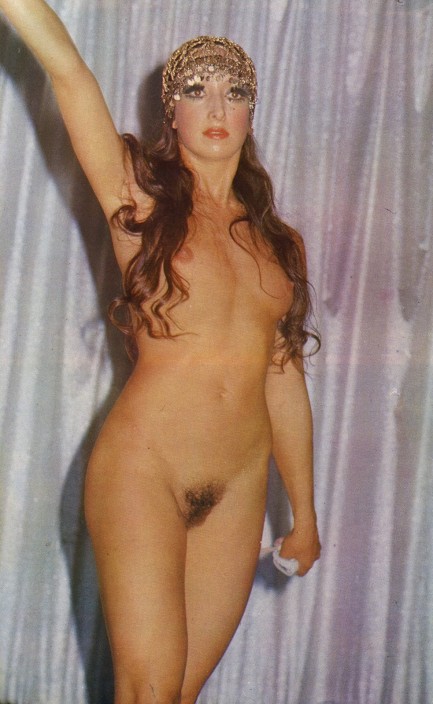 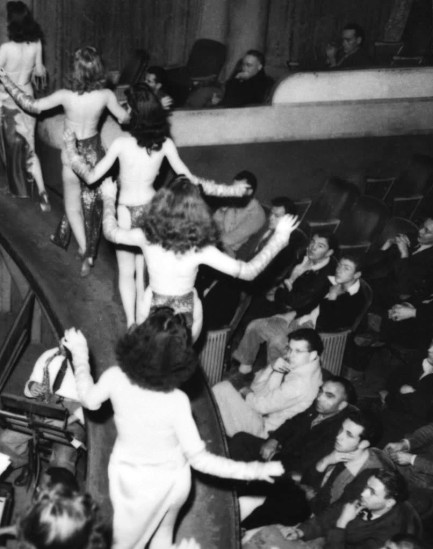
The Follies Theater at 337 S. Main Street, Los Angeles, 1946.
Tempest Storm.
Gay Dawn.
Yvonne Ménard, and more photos here.
Carol Jane, aka Spider Woman.
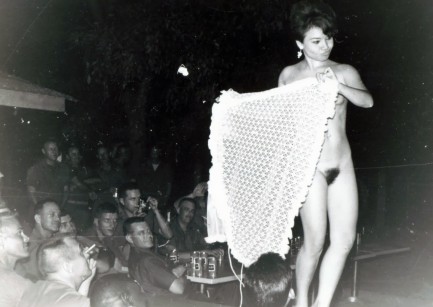 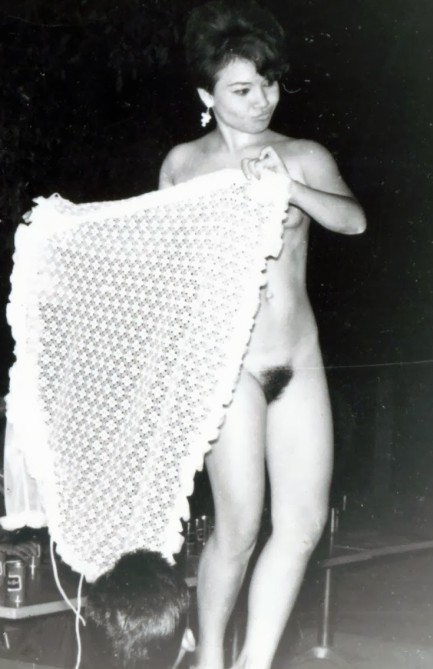 Jackie Miller.
 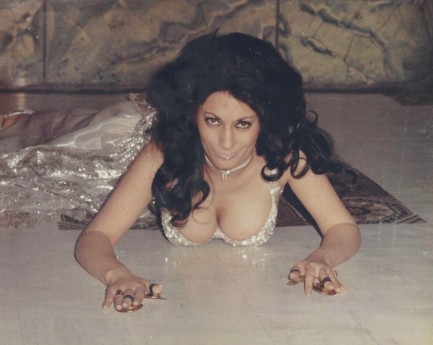 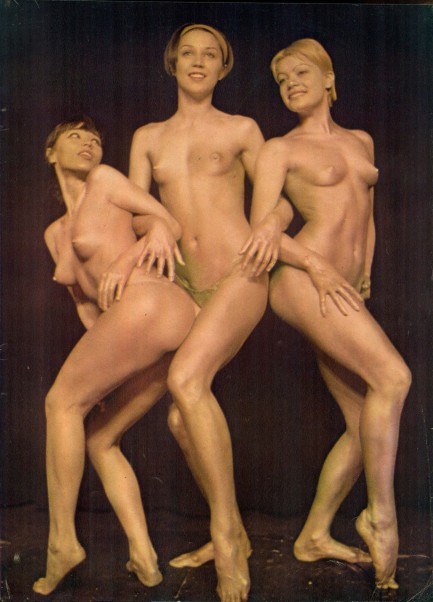 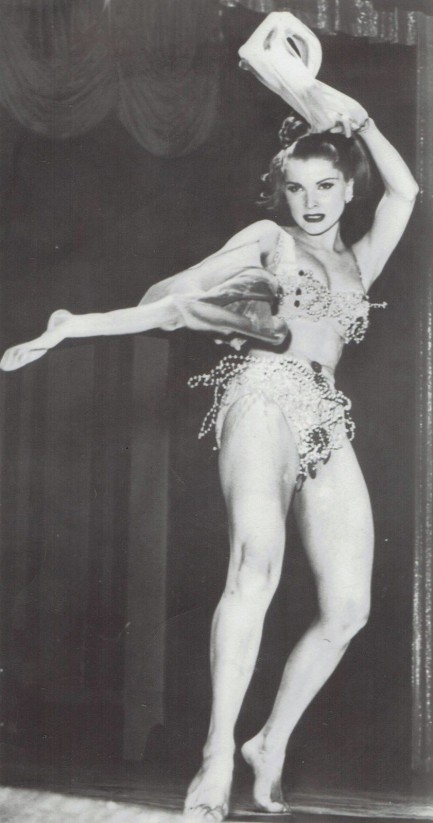 Debra Paget, who performed one of the most provocative screen dances ever in 1959's De indische grabmal. Debra Paget, who performed one of the most provocative screen dances ever in 1959's De indische grabmal.
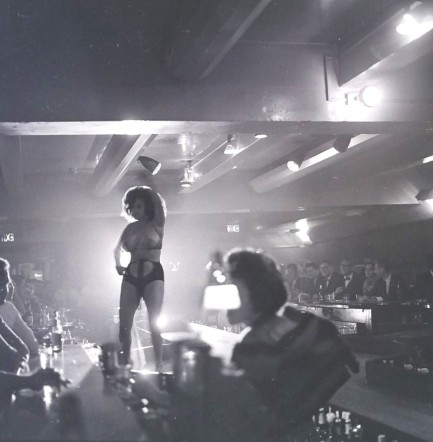 Blaze Starr. We also saw her recently here. Blaze Starr. We also saw her recently here.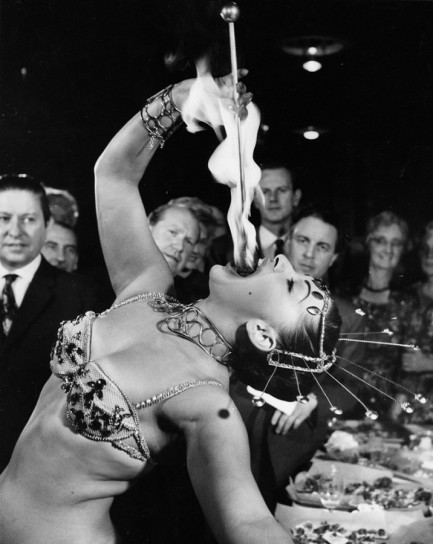  
 Everyone wants flexibility in their work. Only a few succeed. 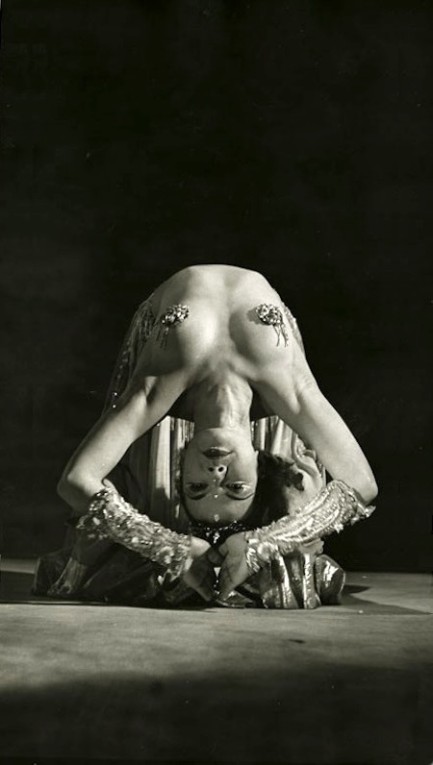
Bellydancer Nejla Ates strikes the difficult backbend pose for this unusual promo image made in 1954. Ates was born in Romania but was Turkish, and rose to become an internationally famous performer nicknamed the Turkish Delight. She later appeared in films, including 1955's Son of Sinbad with Lili St. Cyr, and modeled for album sleeves for Middle Eastern music, as we've shown you. In addition to all that she was popular in the tabloids. That means you'll see her again at some point.
 The French know how to put on a show, and the Japanese know how to put on a poster. 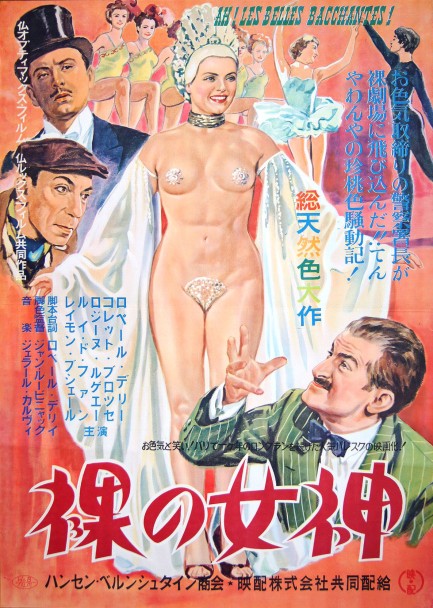
Here's a fantastic poster we've had sitting around for a while made for the Japanese run of the French film Ah! les belles bacchantes!, which was changed here to Hadaka no megami, or “the naked goddess,” and in English was known as Ah! The Beautiful Priestesses of Bacchus, Peek-a-Boo!, and other titles. Basically it follows a provincial morals cop played by Louis de Funès who decides to take a close look at the local cabaret revue expecting to shut it down, but due to a series of wacky events during the rehearsals he ends up appearing in the show.
This will be the first time this poster has ever been online, but it isn't the first time we've talked about the movie. We wrote about it eight years ago and shared a different, equally rare promo. You'll notice that the Japanese title is different, but the French title in the upper right corner is the same. Ah! les belles bacchantes! is an extremely interesting historical curio, effervescent and sexy, evidencing how much more advanced the French were concering the human body than puritans in the U.S. It premiered in France the autumn of 1954 and reached Japan today in 1955. We also have two other posters in the same beautiful style that you can see here and here.

 She can't help it—every time she goes out it's in a Blaze of glory. 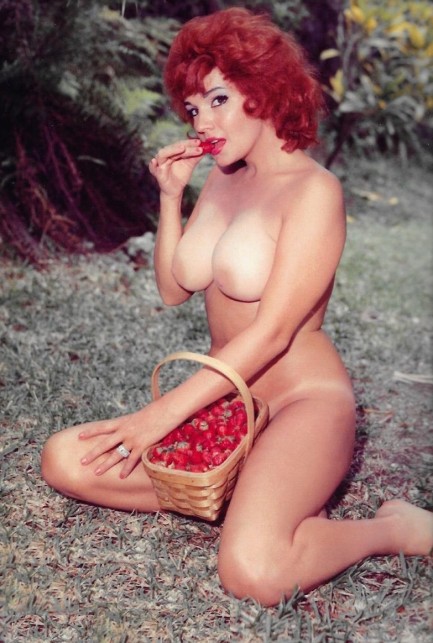
Above: a fun shot of strawberry eating burlesque dancer, nudist, actress, and all around public figure Blaze Starr, made by Bunny Yeager on the set of Blaze Starr Goes Nudist. It dates from 1962.
 I chose the stage name Busty, but I think you'll agree I have other assets. 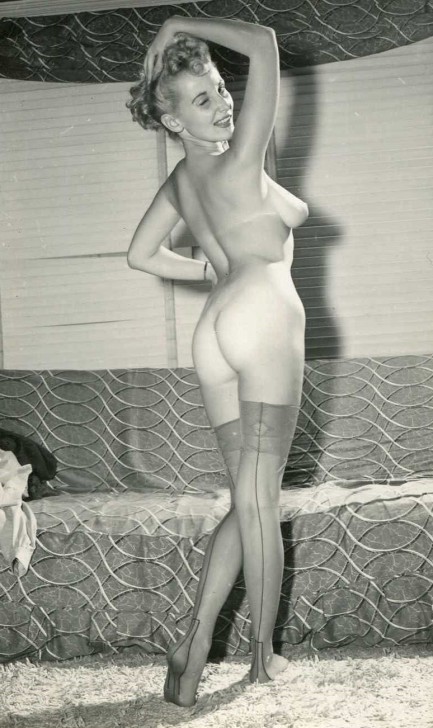
Here's a nice photo of U.S. burlesque star Donna Mae Brown, aka Busty Brown. We had some fun with a 1960 photo of her in divorce court, but wanted to bring her back. Old photos of burlesque performers are often hard to date, but Brown was very popular for most of the 1950s, so if you split the difference this shot might have been made around 1955.
 There's no freer feeling than fresh air on your... um, than fresh air. 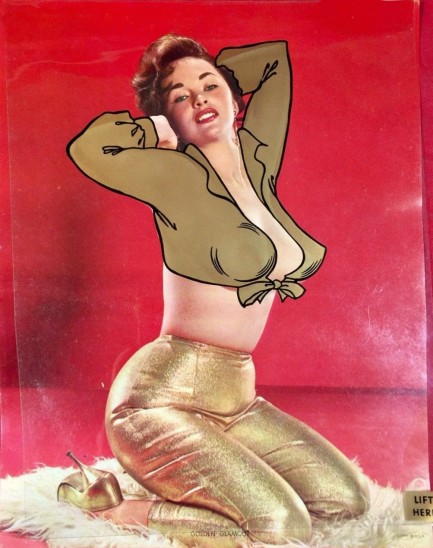 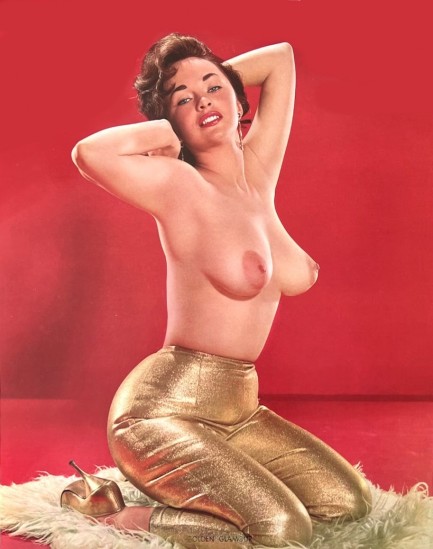
Today we have one of our favorite items from the mid-century era—a Technicolor lithograph with an acetate overlay. We've shared a number of these. The star here is Bonnie Logan, model and stage performer. She was of a more provocative variety than usual for her time, which you can get a sense of here and particularly here. This piece is probably from around 1960. As for our other examples, you wanna see them all? Okay, if you check this link, then this one, and follow the subsequent links from there, you'll be able to—we think—look at every one we've posted.
 Mid-century girly mags are always a winning draw. 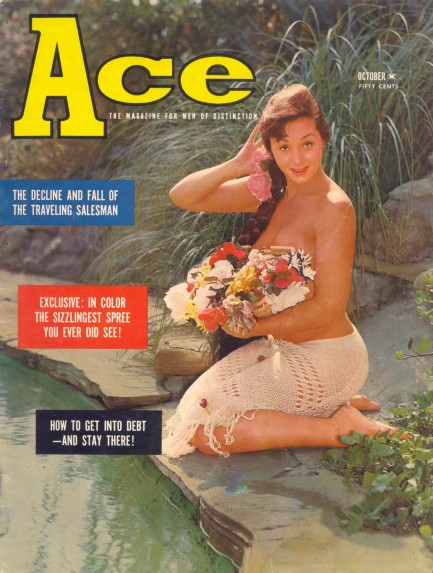
As the Cole Porter song goes, in olden days a glimpse of stocking was looked on as something shocking—and exemplifying that concept is Ace, the “magazine for men of distinction,” which debuted in 1957 during the height of the cheesecake era. In this day and age Ace is strictly kid stuff. But that's why it's cool to look back at. Like other publications of its ilk, Ace came along to fill the void left by the slow demise of mens adventure magazines, and as was typical, it grew more daring as the years went by, before finally folding in 1982, itself a victim of changing tastes and more rawness provided by porn mags.
This particular issue, published this month in 1960, features the usual mix of humor, adventure, and models, including the amusingly named Beverly Hills, aka Carla Henderson, who gets a spread inside plus the eye-catching rear cover, Eve Post, who the editors claim was discovered by Jack Benny, and Brandy Kayse, who poses as "Eve." Several of the models, such as Frances Beck, Lacey Kelly, Virginia Remo, and Pat Gregory, managed minor film roles. Elsewhere in the magazine there's plenty of nice art, plus the usual "fact" (men are polygamous?) and fiction. Multiple scans below.
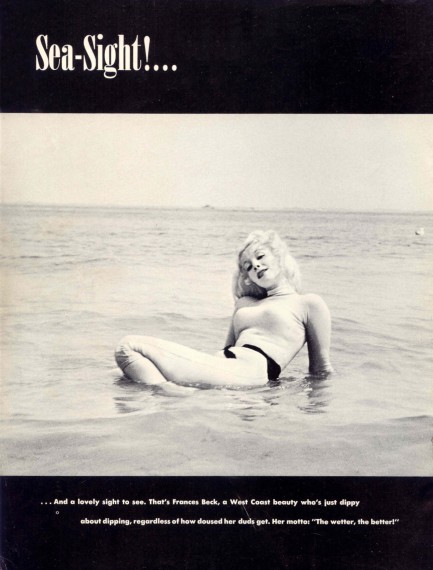 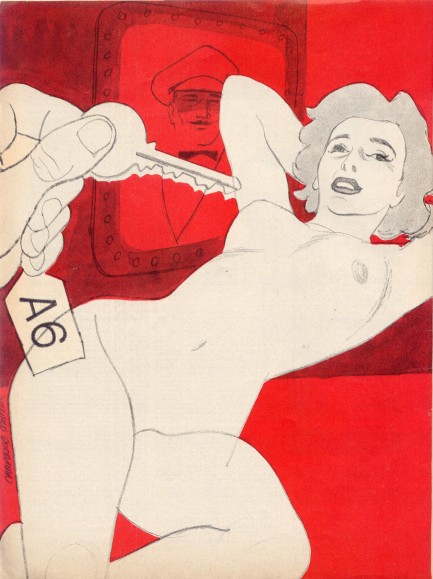 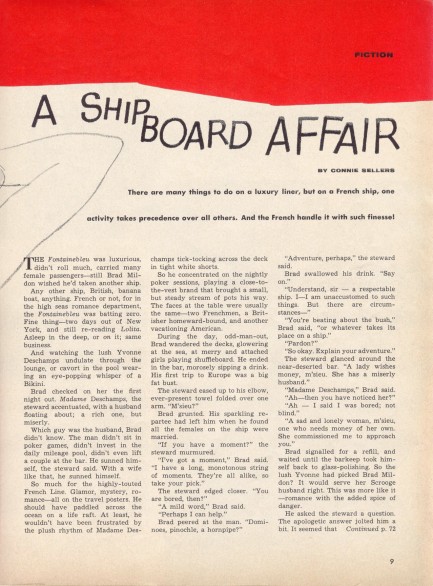 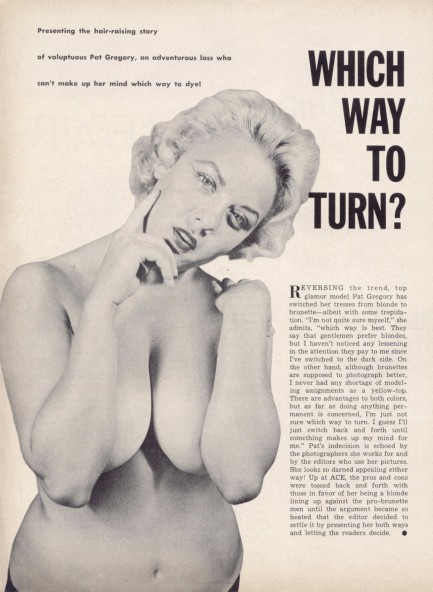 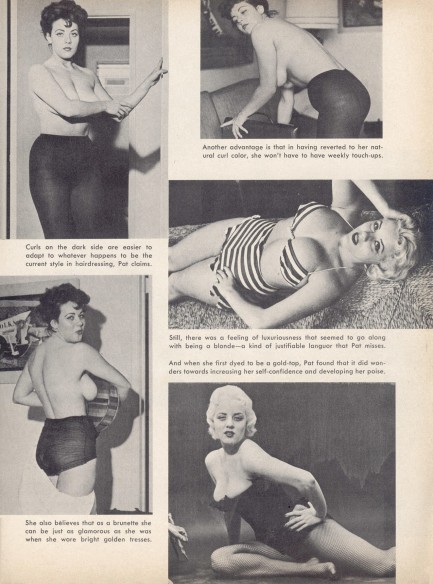 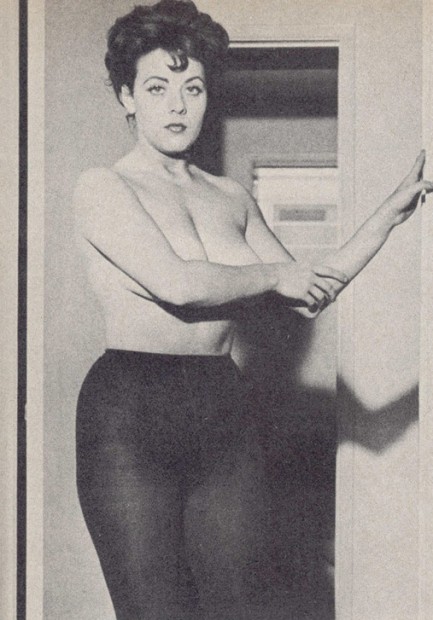 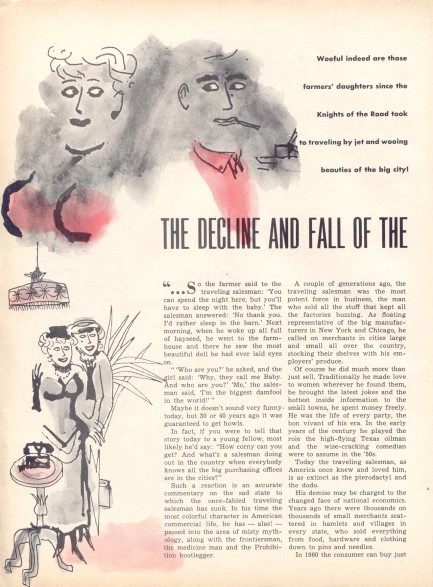 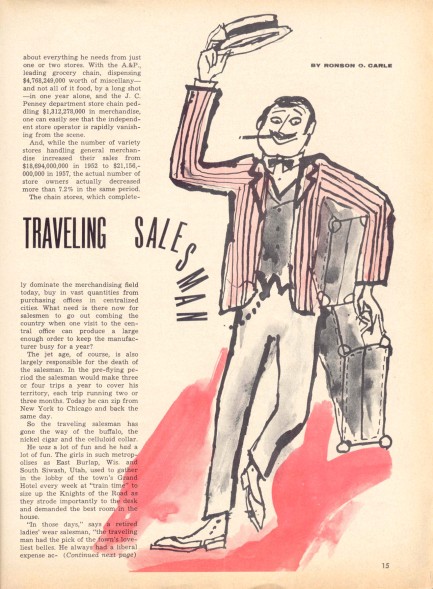 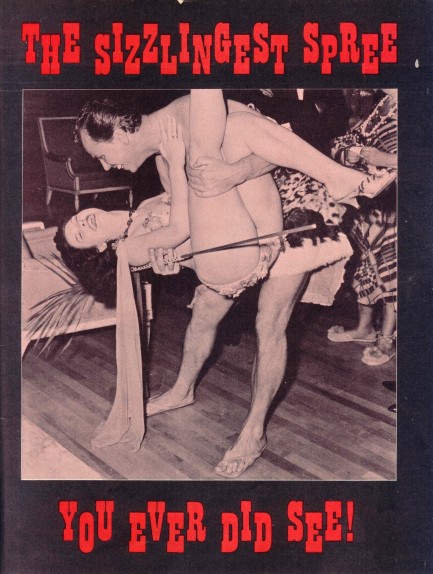  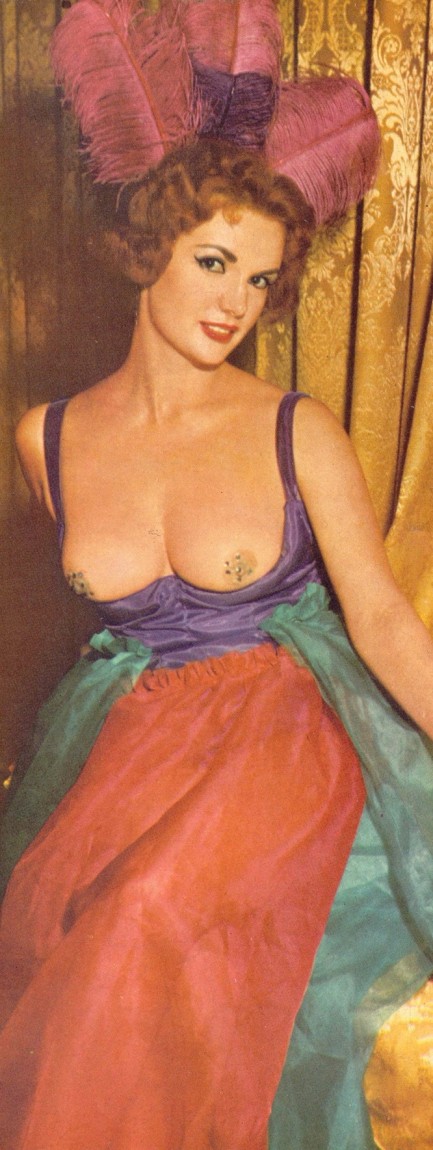 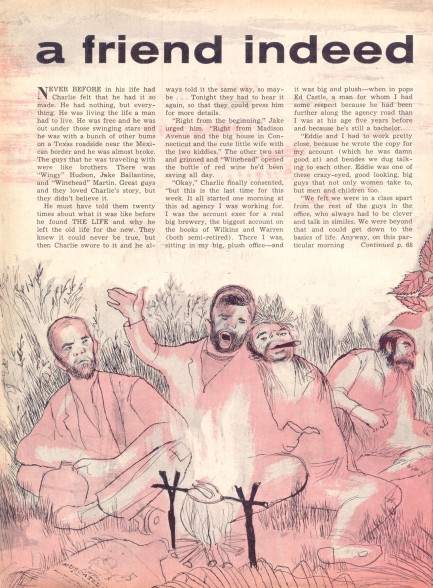 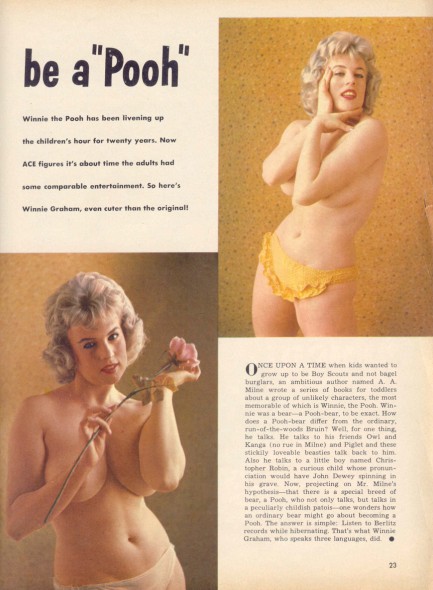 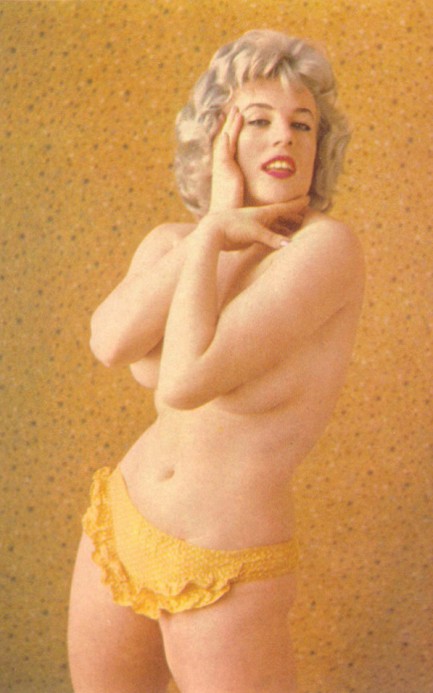 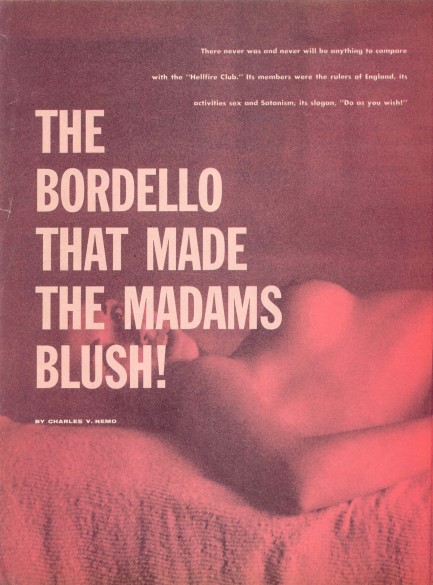 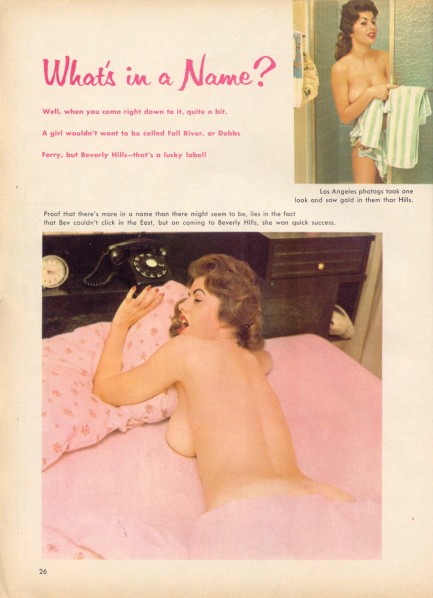 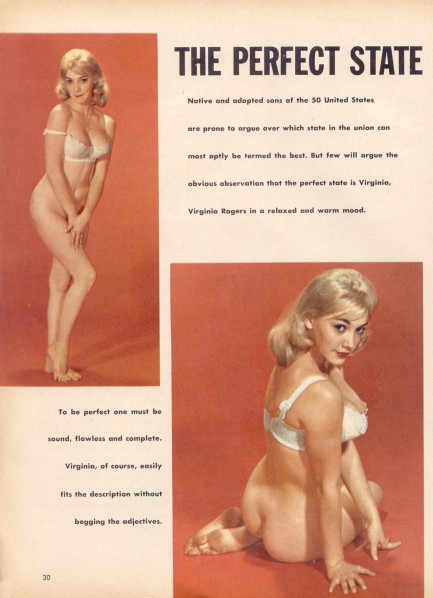 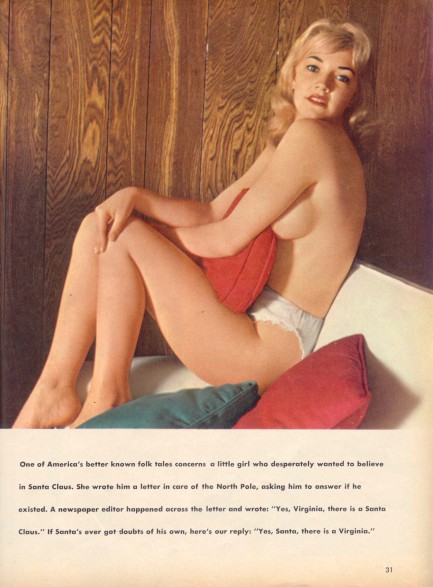 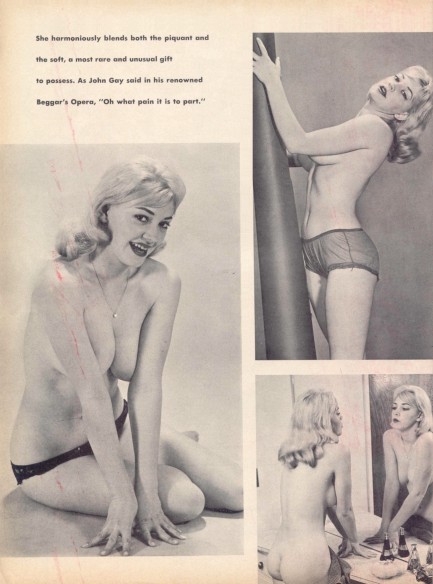 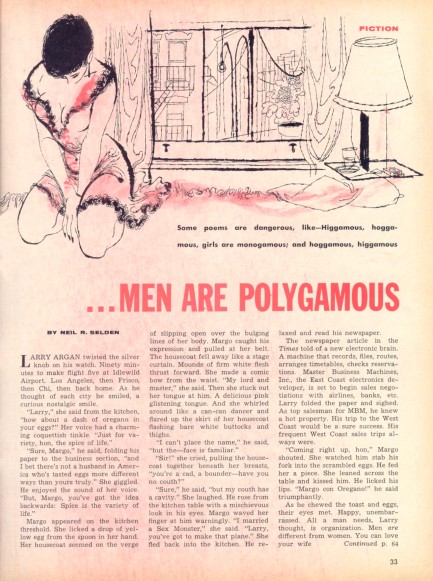 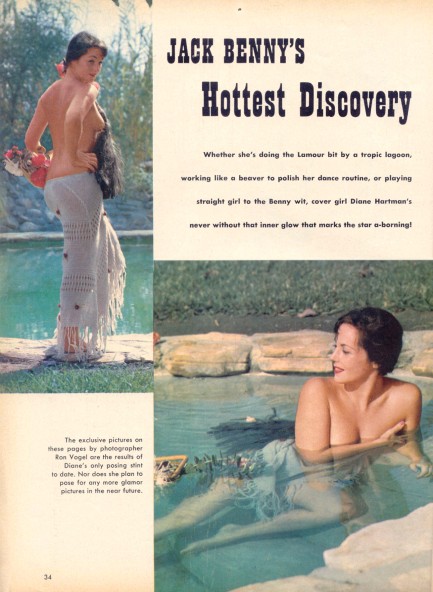 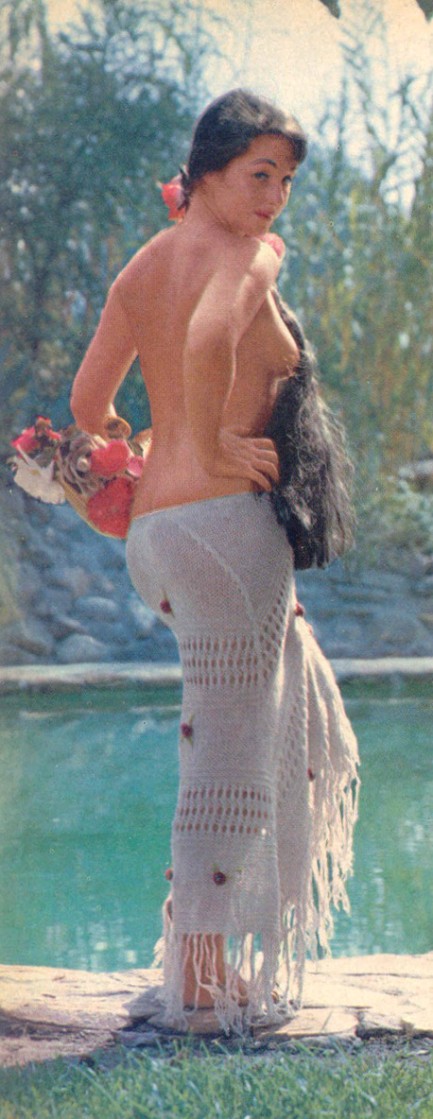 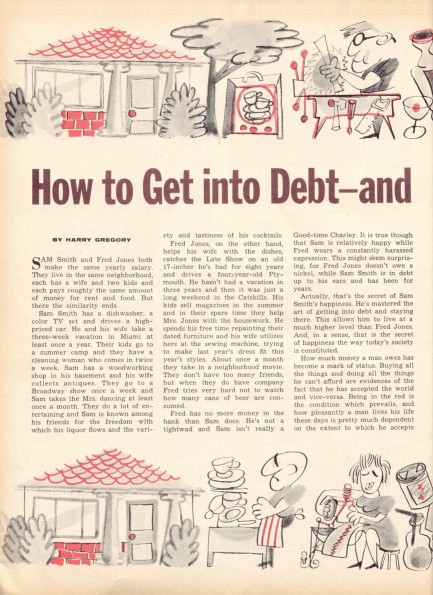 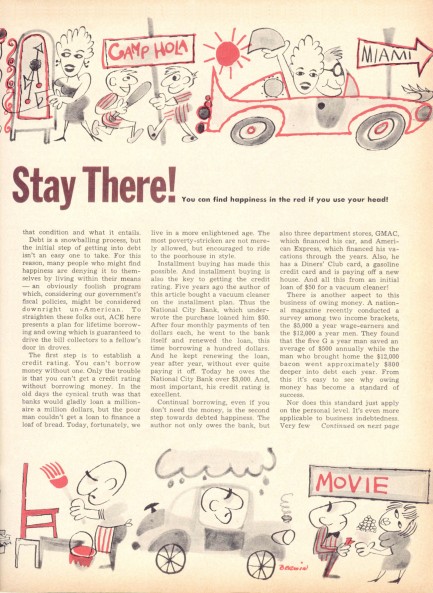 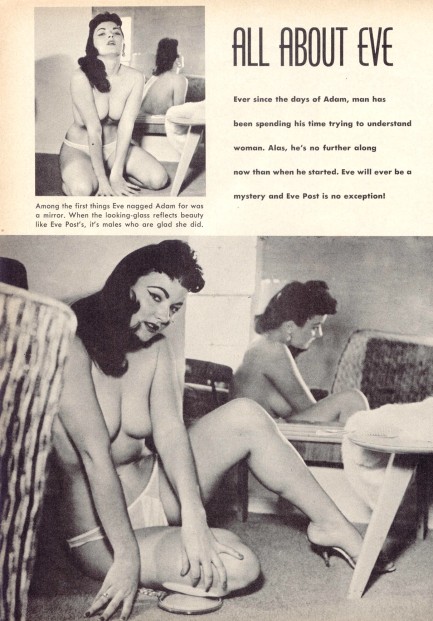 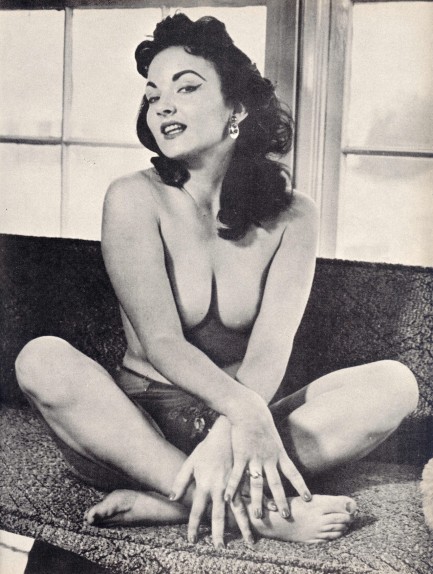 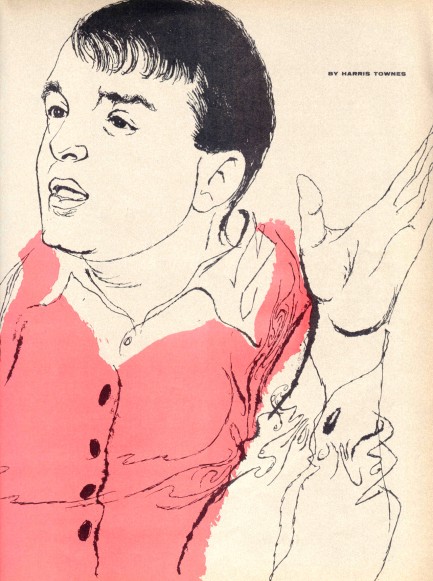 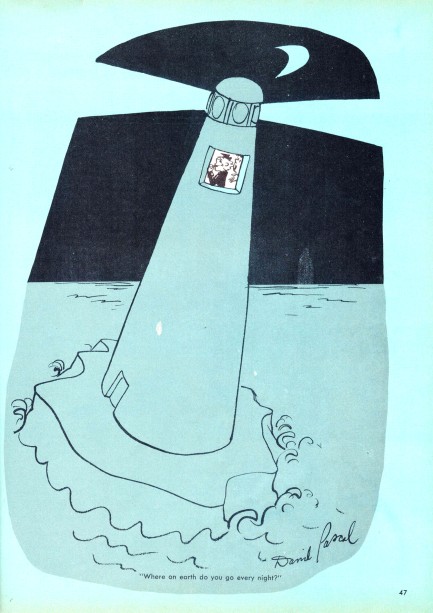 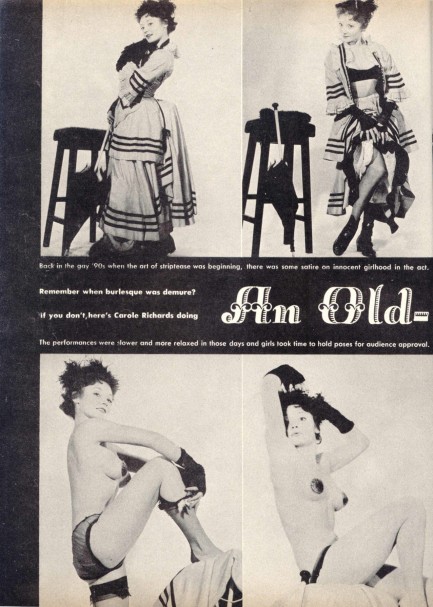 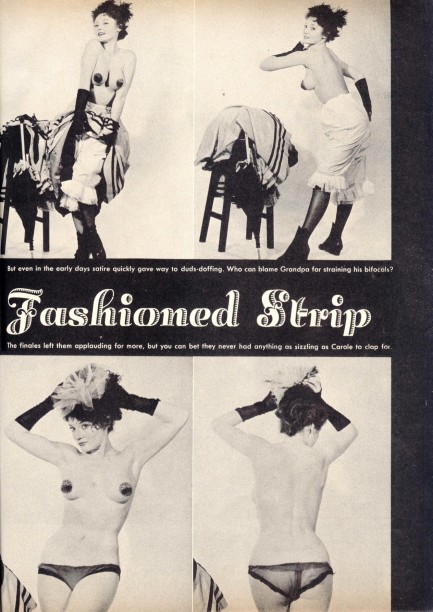 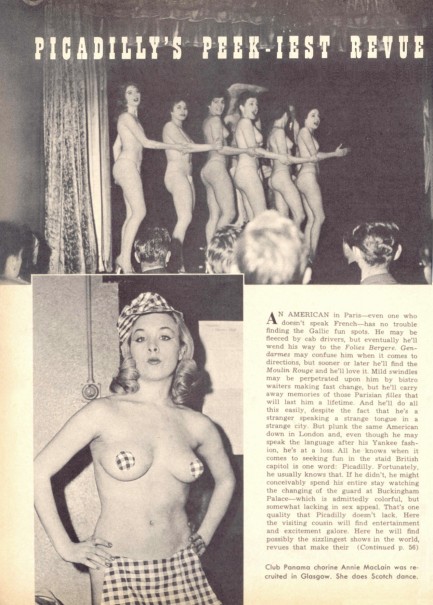 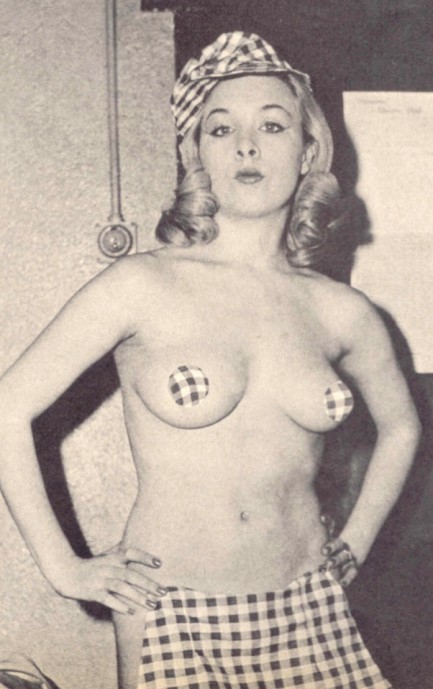 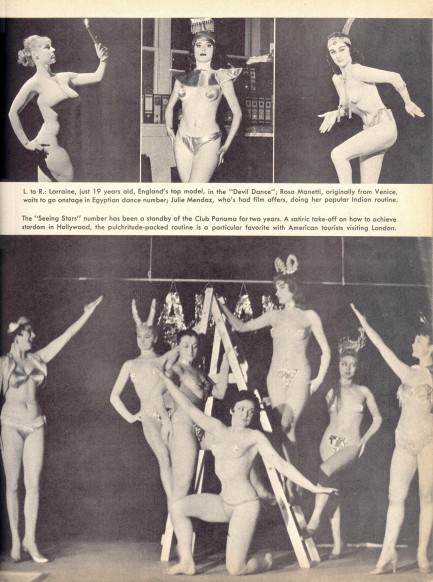 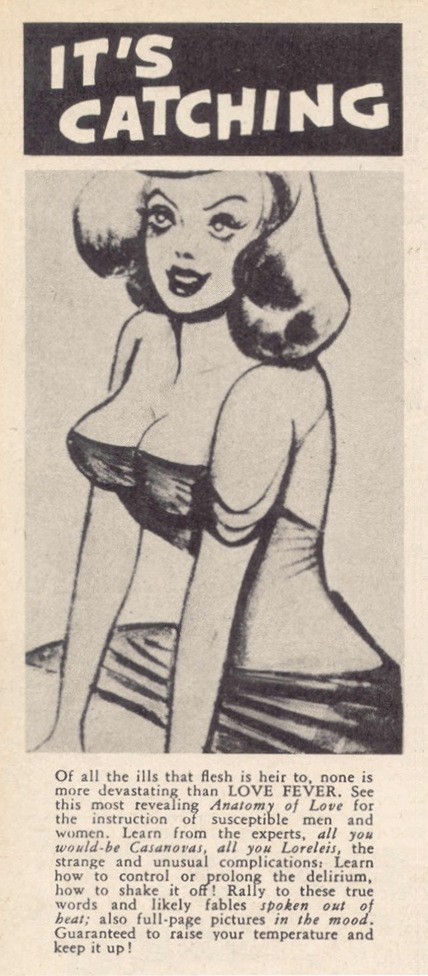 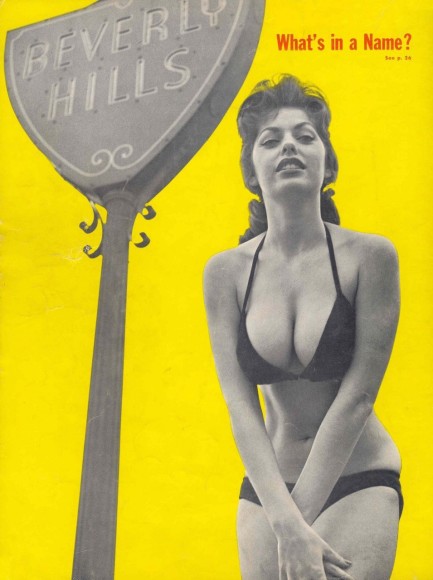
 She always got the juices flowing. 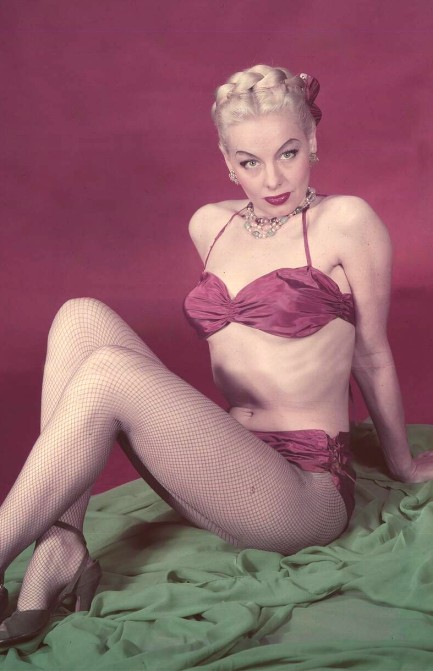
We ran across the above photo of mid-century burlsque queen Lili St. Cyr today, and it was all we needed to decide it was high time to repost her. She's looking particularly picturesque here. We have many entries on her, and certainly will have more, but as a service to you (clicking keywords will let you see everything), we'll make your work easier by pointing to two favorite images here and here.
The practice of burlesque resides in a cultural gray area. The simmering debate is whether it is merely an artful exploitation of women's bodies, or is basically feminist in nature because of the agency the dancers possess. People more serious than us will decide that. We just think she looks cool, and we regard her on the terms she chose: as a dancer and model. Life can be so simple when you let other people do the worrying. 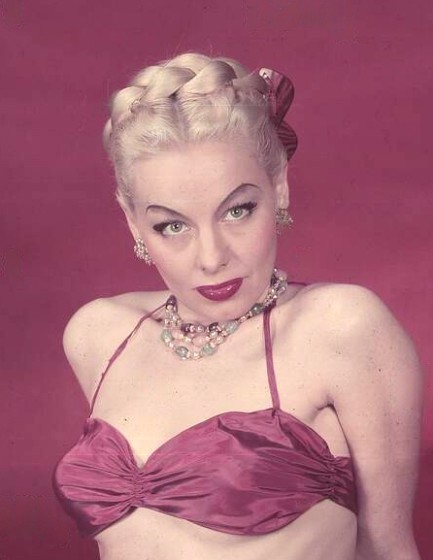

|
 |

The headlines that mattered yesteryear.
2003—Hope Dies
Film legend Bob Hope dies of pneumonia two months after celebrating his 100th birthday. 1945—Churchill Given the Sack
In spite of admiring Winston Churchill as a great wartime leader, Britons elect
Clement Attlee the nation's new prime minister in a sweeping victory for the Labour Party over the Conservatives. 1952—Evita Peron Dies
Eva Duarte de Peron, aka Evita, wife of the president of the Argentine Republic, dies from cancer at age 33. Evita had brought the working classes into a position of political power never witnessed before, but was hated by the nation's powerful military class. She is lain to rest in Milan, Italy in a secret grave under a nun's name, but is eventually returned to Argentina for reburial beside her husband in 1974. 1943—Mussolini Calls It Quits
Italian dictator Benito Mussolini steps down as head of the armed forces and the government. It soon becomes clear that Il Duce did not relinquish power voluntarily, but was forced to resign after former Fascist colleagues turned against him. He is later installed by Germany as leader of the Italian Social Republic in the north of the country, but is killed by partisans in 1945.
|

|
|

It's easy. We have an uploader that makes it a snap. Use it to submit your art, text, header, and subhead. Your post can be funny, serious, or anything in between, as long as it's vintage pulp. You'll get a byline and experience the fleeting pride of free authorship. We'll edit your post for typos, but the rest is up to you. Click here to give us your best shot.

|
|





